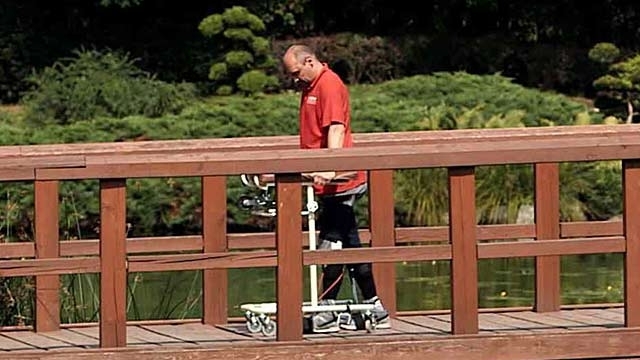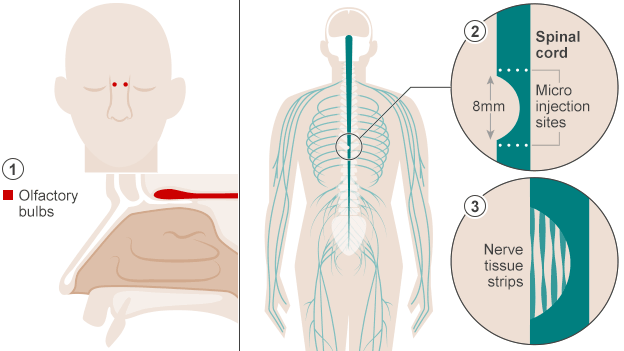In a world first, movement and sensation have been returned to a man who was paralyzed four years ago. After a pioneering cell transplant using special cells that naturally regenerate, 40-year-old Darek Fidyka is walking again.
“When you can’t feel almost half your body, you are helpless, but when it starts coming back it’s like you are born again,” said Fidyka, who is now able to walk with the support of a frame. Fidyka said the restoration of his legs was “an incredible experience.”
Fidyka, now 40, was paralyzed after being stabbed multiple times in his back during an attack in 2010. He remained paralyzed with no signs of recovery for two years after the accident, despite extensive physiotherapy.
Scientists took olfactory ensheathing cells (OECs) from one of Fidyka’s olfactory bulbs, grew the cells in culture, and micro-injected about 500,000 cells (an amount that can be conceptualized as a drop of liquid) into the gap in Fidyka’s spinal chord to stimulate repair and regrowth. The team made about 100 micro-injections above and below the injury site.
OECs are part of the sense of smell. They are nerve fibers that constantly regenerate.
The treatment was successful after about three months. Fidyka began putting on muscle in his thigh. After six months, Fidyka took his first steps along the parallel bars.
Two years after treatment, Fidyka can walk outside using a frame. Bladder, bowel and sexual function has also partially recovered.
The scientists involved believe that OECs provided a pathway whereby fibers around the injury site can reconnect–essentially using the nerve grafts to bridge the gap.
“You are making history now,” lead scientist Prof Geoff Raisman, chair of neural regeneration at University College London’s Institute of Neurology, told Fidyka. “To me, this is more impressive than a man walking on the moon.”
“We’re at the point now of where Barnard was with the first heart operation,” said Chef David Nicholls, who funded a great deal of the research through the organization UK Stem Cell Foundation (UKSCF), which Nichols founded after his son was paralyzed in a swimming accident in 2003.
“It’s amazing to see how regeneration of the spinal cord, something that was thought impossible for many years, is becoming a reality,” said Dr Pawel Tabakow, consultant neurosurgeon at Wroclaw University Hospital, who led the Polish research team.
The scientists are currently undertaking the next leg of their research: a controlled clinical trial involving 10 patients.
“The first patient is an inspirational and important step, which brings years of laboratory research towards the clinical testbed,” said Sir Richard Sykes, chair of the UK Stem Cell Foundation. “To fully develop future treatments that benefit the 3 million paralysed globally will need continued investment for wide scale clinical trials.”
The research was supported by the Nicholls Spinal Injury Foundation (NSIF) and the UKSCF, and the most recent report on Fidyka was published in Cell Transplantation.
By Heidi Woolf

